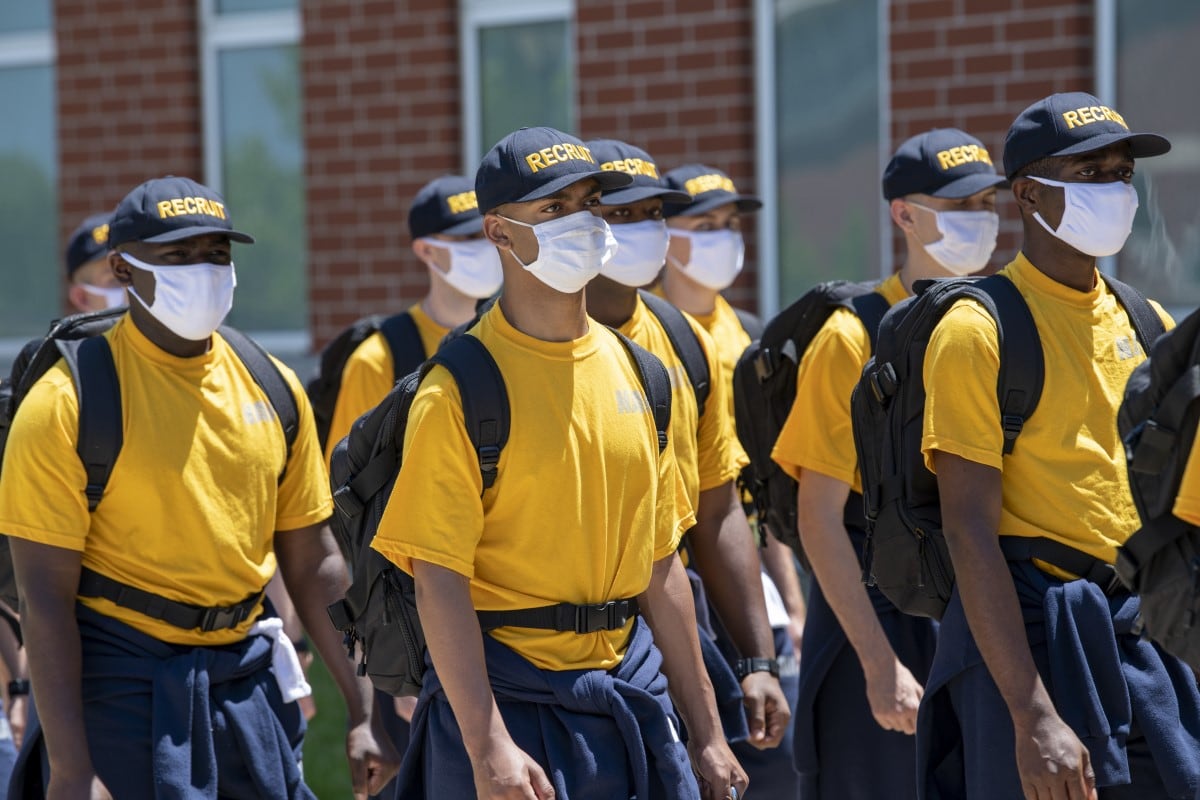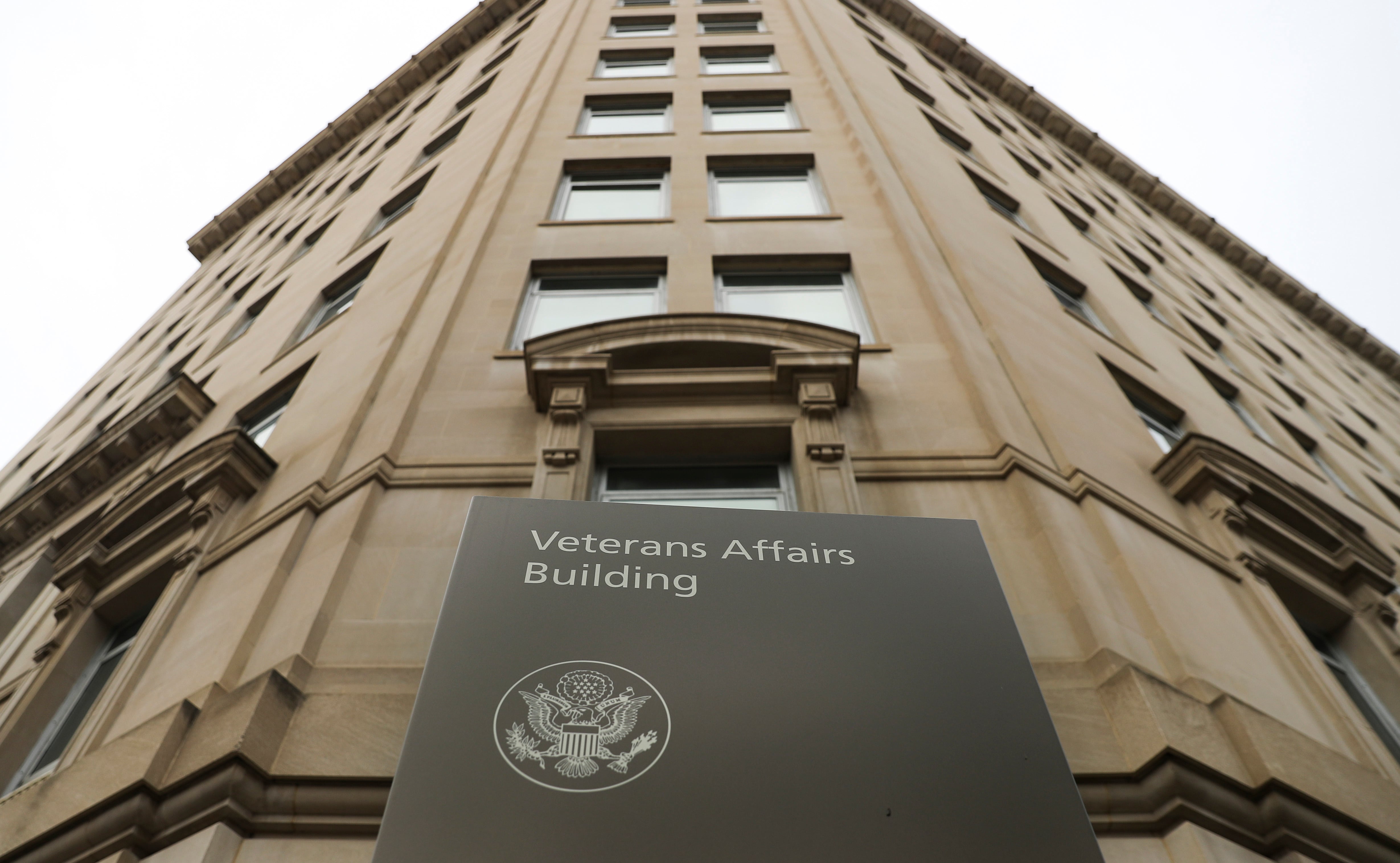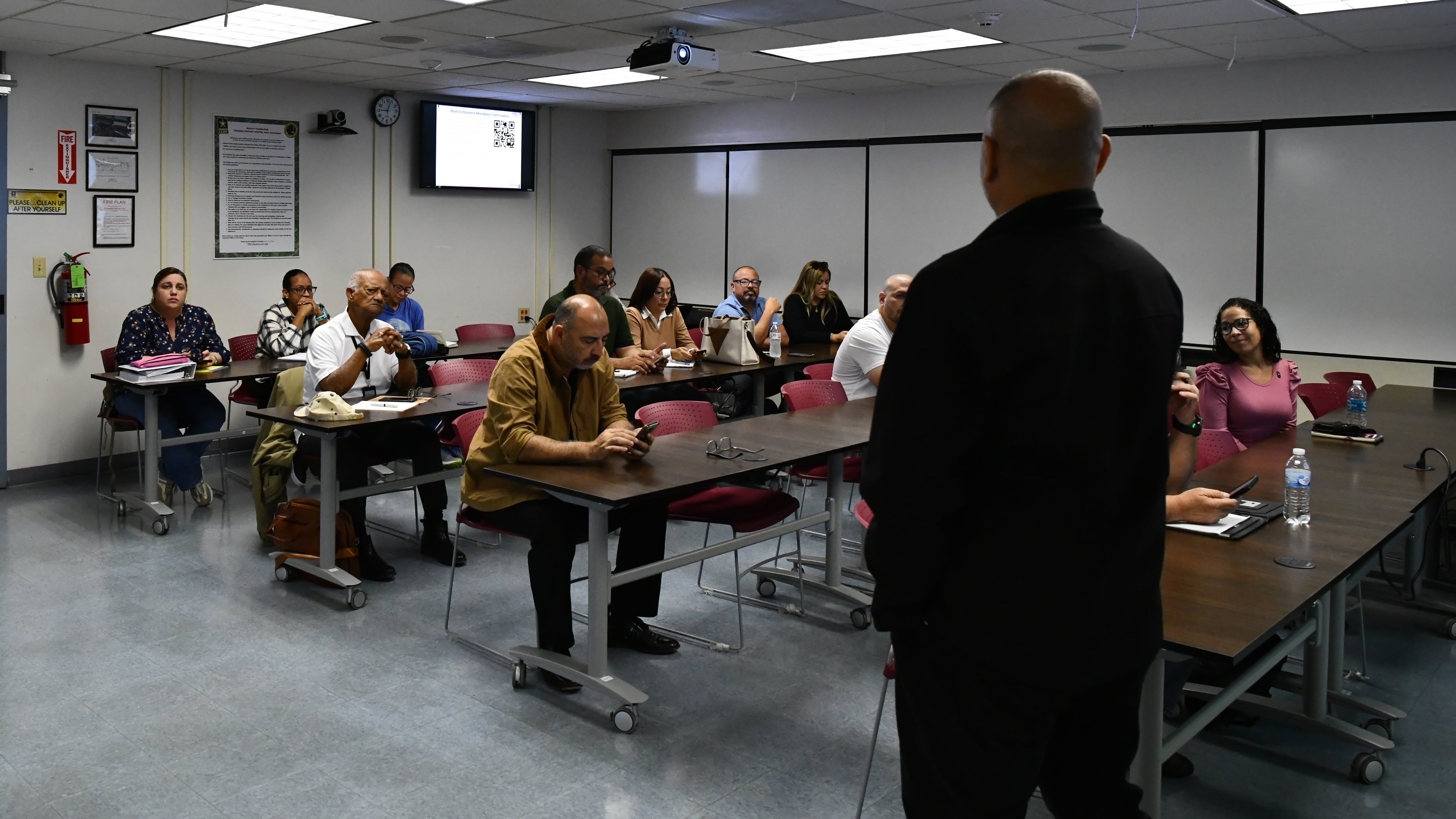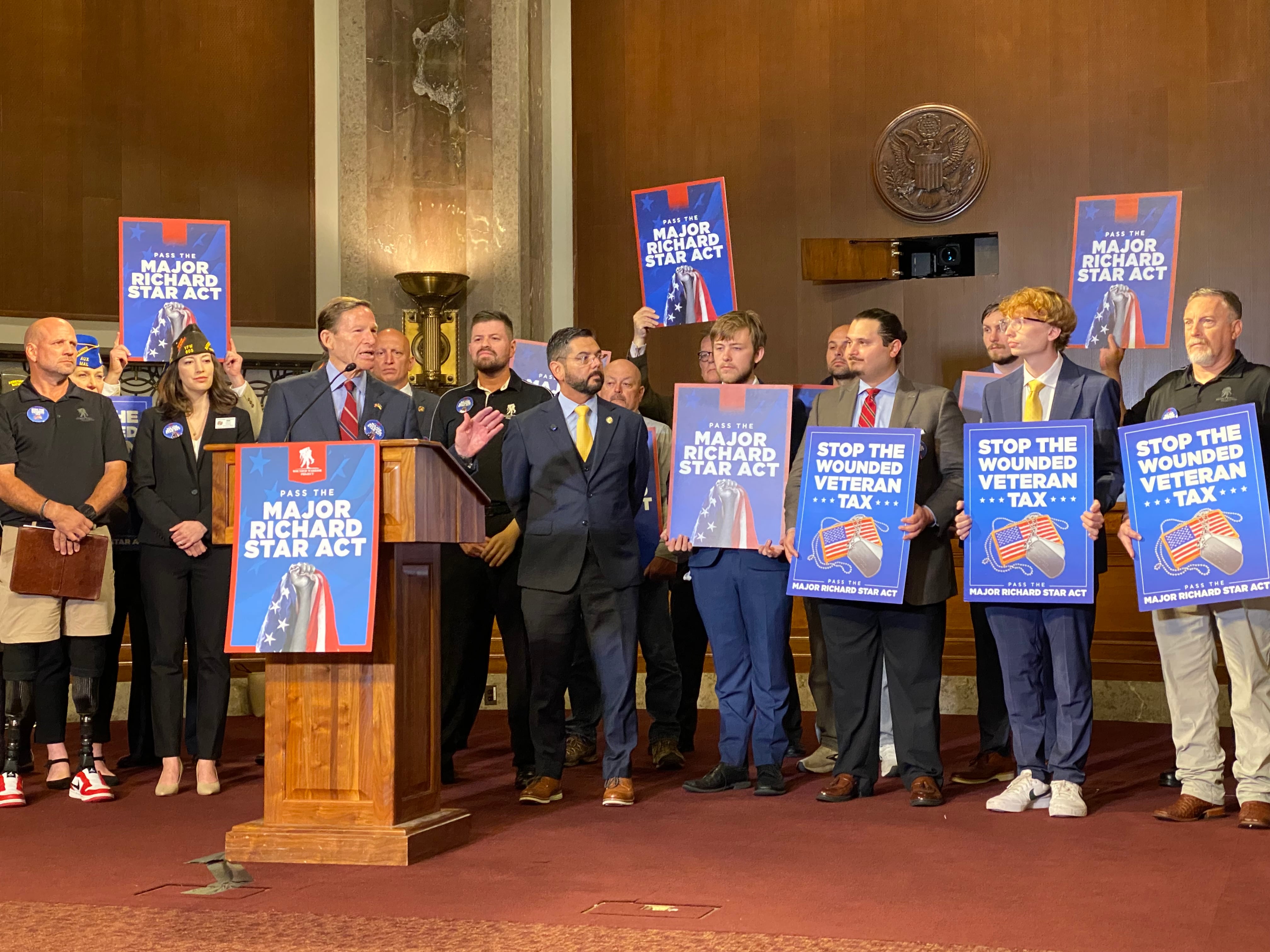A down economy is notoriously fertile ground for military recruiting, setting up an opportunity for the services to shore up their end strengths while the civilian job market is in crisis. In the wake of massive unemployment during the COVID-19 pandemic, recruiters have the opportunity to bring in more high-aptitude recruits, an easier feat when the economy is in a downturn.
The Army, Air Force and Marine Corps have all upped their recruiting goals this year, after the COVID-19 pandemic slowed the number of incoming recruits in 2020. The increases coincide with a long-term plan to grow the Army, while the Air Force is overmanned and the Marine Corps is drawing down its manpower.
“It’s not just that the services are more likely to meet their recruiting missions, but they’re more like to meet them with better-qualified, higher-quality young people,” Beth Asch, a Rand Corp. researcher whose recruiting research reports go back three decades, told Military Times on Thursday.
The increased recruiting goals come after last year’s tough environment slowed accession and forced more recruiting efforts online.
While the Army, Navy, Air Force and Marine Corps all met their 2020 active-duty recruiting targets, which often fluctuate through the year based on retention, they did it in a mostly remote environment.
Now, they’re taking what they’ve learned and putting it to the test.
“The important in-person conversations and interaction so integral to our systematic recruiting process were temporarily shut down nation-wide at the height of the pandemic, and our Marine Recruiters had to pivot toward digital efforts,” Gunnery Sgt. Justin Kronenberg, Marine Corps Recruiting Command spokesman, told Military Times. “Thankfully we have been training our Marines on these communication methods for several years and continue to reinforce digital engagement tactics through training and leadership.”
The Marine Corps’ 2021 goal shows the biggest increase, with the active-duty enlisted target jumping from 28,048 to 29,600, or 1,552 more.
That’s closer to the goals from the three years preceding 2020, when enlisted targets were around 32,000. At the same time, the active-duty officer goal is down, from 1,352 in 2020 to 1,206 this year.
“Some of the things we developed this year that will probably endure include creating more digital recruiter support materials like videos for virtual presentations, continued investment in app-based mobile technologies like our USMC Squad Bay application, and research to better understand any lasting impacts the pandemic may have on youth propensity to serve,” Kronenberg said.
RELATED

The Army managed to slightly overshoot its 2020 goals, according to data, bringing in 53 more active-duty soldiers than the planned 61,200. The service, which is working toward a goal of 500,000 active soldiers, with 486,000 by the end of 2022, has been adjusting its yearly recruiting goals to balance its end-strength targets.
For that reason, a spokeswoman for the Army G-1 declined to give Military Times an accessions goal for 2021, but offered that this year’s end-strength increase goal is between 1,000 and 1,500.
“We fully expect 2021 to remain challenging for America and for our recruiters,” Lt. Col. Junel Jeffrey said. “The Army will continue to encourage creativity and innovation from recruiters in the field, because we know that they know best what works in their areas.”
However, according to the service’s fiscal year 2021 budget request, it was hoping to recruit 72,000 new soldiers this year.
RELATED

The Air Force is shooting for 28,738 active-duty enlisted accessions this year, with 1,379 officers.
“Since many in-person events have been canceled, Air Force recruiters will be using social media, digital engagement, virtual engagements, etc., to assist with the recruiting mission,” Leslie Brown, an Air Force Recruiting Service spokeswoman, told Military Times.
That’s up more than 2,000 enlisted airmen and over 100 officers from 2020′s goals.
The Navy is the lone service to reduce its accession goal, shooting for about 38,000 new enlisted sailors this year, down from last year’s 39,600.
‘A lot more uncertainty’
Despite the logistical challenge of more remote recruiting, decades of research show that economic strife drives military recruiting, with the promise of regular paychecks, housing, health care and education benefits.
Joan Yazze Gallegos, who lost her job doing social media for a New Mexico casino, told her local Albuquerque ABC affiliate that the layoff prompted her to enlist.
“The Army offered me stability, a debt-free future,” she told the station. “It offered me a pride I have, to fit in with my family, as well as more self-confidence with myself.”
Pandemic unemployment hit young people particularly hard, according to a Brookings Institution report published in September. While U.S. unemployment saw an overall bump of 11.2-percent between February and April, unemployment among 16-to-19-year-olds jumped nearly 21 percent.
“The result is that while young people age 16 [to] 29 make up less than a quarter of the labor force, they accounted for about a third of the rise in the unemployment rate between February and April of this year,” the report found.
By July, according to the Bureau of Labor Statistics, youth employment was still down, about 10-percent less than the same time period in 2019. The drop is particularly notable because the summer months usually show a spike in youth employment.
Multiple studies and reviews have shown that a booming economy can damper military recruiting, while a shaky one makes the military a more attractive option.
While graduating high school seniors are the military’s target recruiting demographics, and their biggest competition is college, the uncertainty of the pandemic and its economic fallout means more opportunity to offer a stable income, job experience and education benefits to American 18-to-24-year-olds.
“So we certainly can expect that if the economy is in the situation it’s in now, if nothing else changed, we expect recruiting to improve,” Asch said.
Upticks in recruiting have happened during recessions going back to the 1980s, she added.
“The recent economic downturn has improved recruiting and retention and has allowed the services to reduce use of enlistment and reenlistment bonuses,” according to the 11th Quadrennial Review of Military Compensation, a report done every four years that analyzes pay and bonuses and how they help shape the force.
“However, this improvement is expected to diminish as civilian economic conditions improve,” according to the report, which covered 2008 to 2012, during the Great Recession and the beginnings of the economic recovery that followed it.
RELATED

While anecdotally, the recruiting environment can be more fertile during a down economy, Asch said the biggest change to note is the type of recruits the services are able to attract.
“The real metric of how hard recruiting is, is the share of the recruits who are high-aptitude, high school diploma graduates,” she said.
When economy is booming, the services have to put more recruiters on the ground, spend more on marketing and shell out hefty, six-figure bonuses to compete with the civilian job market.
The COVID-19 recession has an extra layer of anxiety, because it’s not just about the regular ups and downs of the economic cycle.
There’s an understanding that things might never get back to exactly the way they were, especially when it comes to employment, now that many companies have learned how to function on a skeleton staff or with totally remote employees. What will that mean for job prospects?
“There’s just a lot more uncertainty,” Asch said. “It’s not just the uncertainty of how long is this recession going to last? But what is employment going to look like?”
That could be another boon for the military, which is able to offer a degree of predictability for its members. Yes, there is the possibility of going to war and being killed in combat, but more assuredly, you know you’re going to be paid twice a month, move every few years and grow in rank and responsibility if you follow the formula.
“I would suspect that greater uncertainty would actually make recruiting better,” Asch said. “The thing about the military is it’s offering qualified young people a career, and there’s certainty associated with it.”
Not only has that had an effect on retention, which is at record-highs, but it could help attract people toward service.
“At the end of the day, the state of the economy does affect how many people eventually come into the military,” she added.
Editor’s note: This story has been updated to reflect the Army’s 2022 end-strength goals.
Meghann Myers is the Pentagon bureau chief at Military Times. She covers operations, policy, personnel, leadership and other issues affecting service members.










